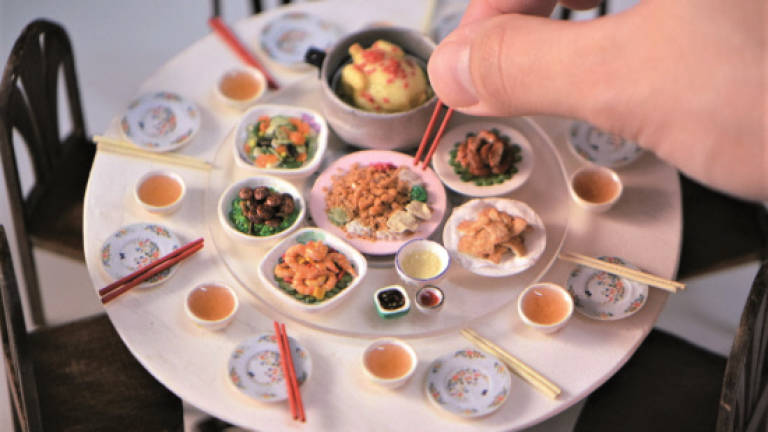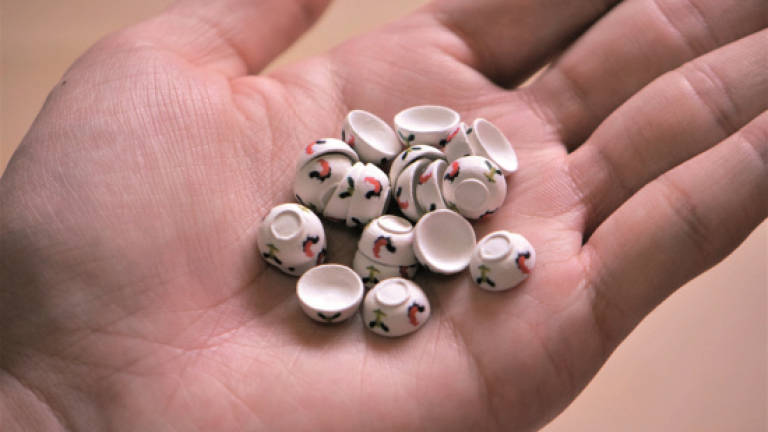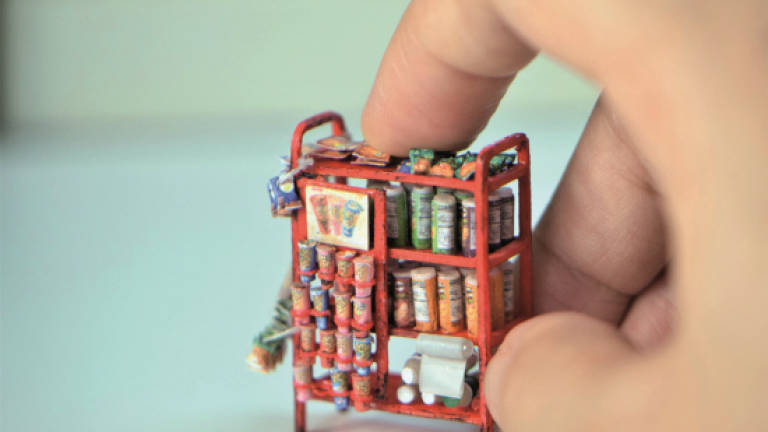The Smaller Picture




SOME people say you need talent to truly excel in a certain skill, but for Lim Pui Wan, she believes that all it takes is passion. After all, she is a real-life example of her own words.
Back in secondary school, Lim fell in love with the intricacy of dollhouse and miniature. This interest compelled her to spend her daily after-school activity doing research via websites and blogs. It went on for a while before she finally made her first clay miniature: a single lollipop.
Nonetheless, the mechanical engineering graduate only pursued a full-time career in making dollhouse miniatures in 2011. She won a local dollhouse competition she joined and the rest is history.
Are your parents supportive of your unconventional career choice?
My mother is open-minded, so I'm lucky that she understands; although she did initially advised me to do it on a part-time basis. Once I explained to her and showed her that I'm fully committed, she gave me her blessings. In fact, she'll come to my room every night to take a peek at my new "babies". Though she does not proclaim it out loud, I know that she's supportive. Nevertheless, I'm not an idealist. I did promise her that I'll look into alternative solutions if I can't generate a steady income from this.
Your works mostly revolve around vintage Asia, such as your provision shops (kedai runcit). Any reason for this?
I'm always intrigued by "old" things. I used to take the bus to university and during those time, I would soak in the old charms in various parts of Kuala Lumpur. Whenever I'm in Petaling Street, I'd also take pictures of cracked walls, rusted pipes, and the likes. These are my inspirations because of the history that they contain. I'm currently working on an old style wet kitchen, complete with cupboards to keep leftover food, rooster bowls and more.
What's the most challenging thing about making miniatures?
It definitely has to be miniatures that I can't use clay to mould. Not all miniatures are made with clay, hence, to achieve the perfect texture, I sometimes need to mimic the texture of the real product. For instance, I used more time to learn and produce a wooden miniature compared to a clay one. Although I couldn't find a good wood material at the beginning, I eventually decided on bass wood – it's more expensive and is slightly harder to work with, but yields better results when carved.
For those who would like to start producing their own dollhouse and miniatures, what tools would you recommend?
They'll need a box cutter, tweezers, acrylic paint, needles and, most importantly, toothbrush for texturising, and pastels to colour the miniatures.
What do you aim to achieve through your miniatures?
I am doing this because I love to keep something in hand. I love photography, but it's one-dimensional. Dollhouses and miniatures, on the other hand, are 3-D where you can see, feel and touch. For example, a Singaporean customer once commissioned me to do an exact replica of her grandfather's provision shop – which has closed down – for him. I found it an extremely meaningful gift. So, it's not just about showcasing Asian traditions, but also to preserve memories.